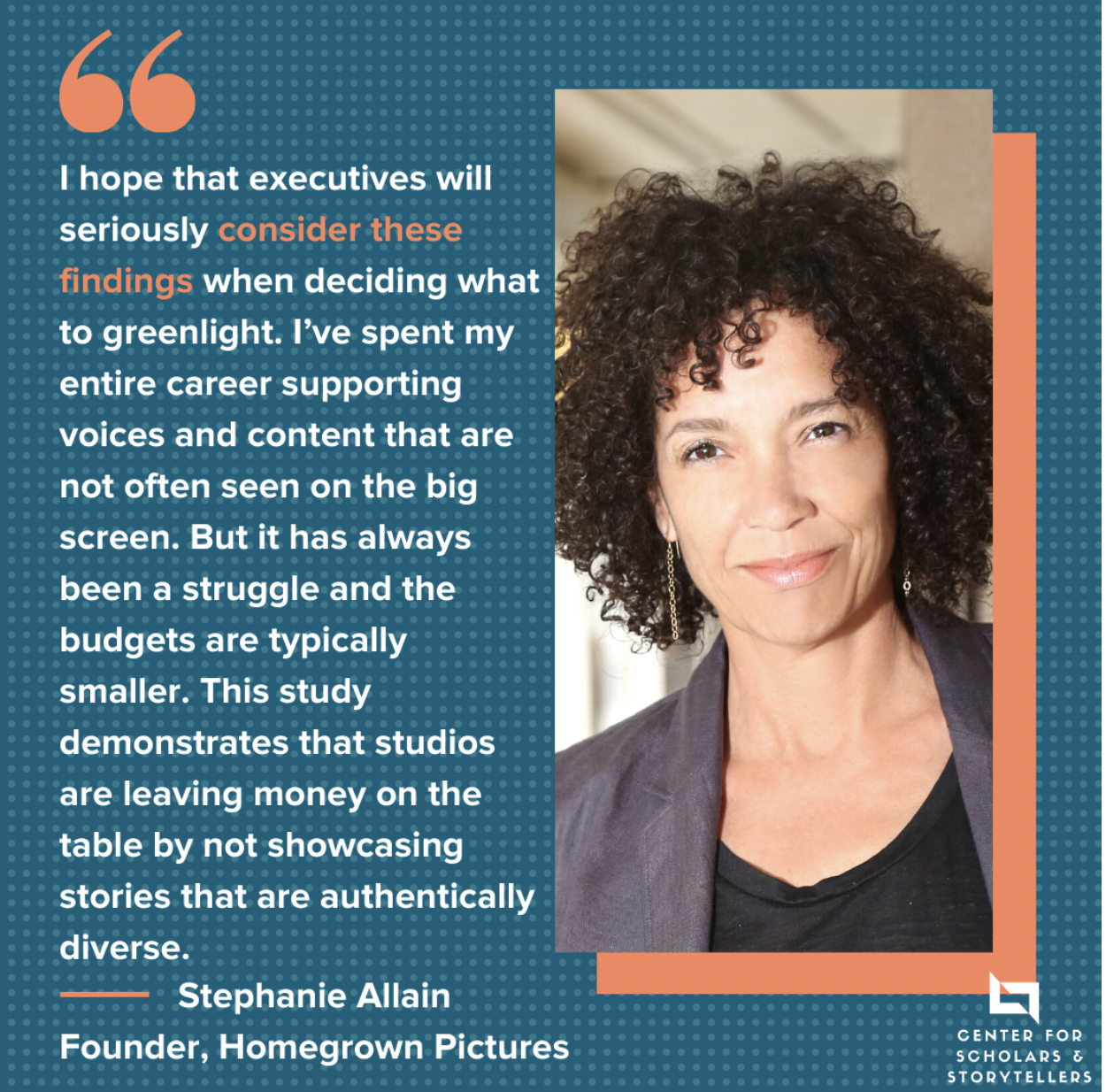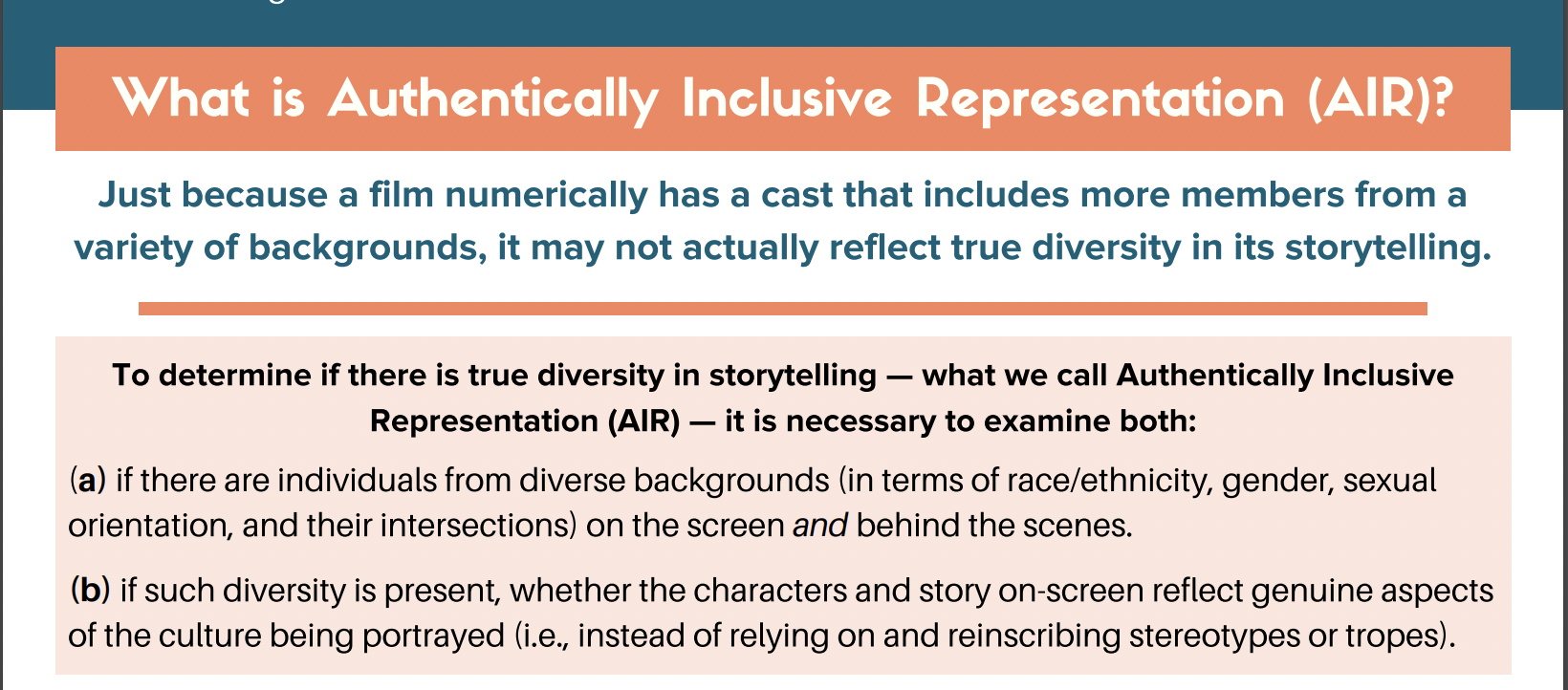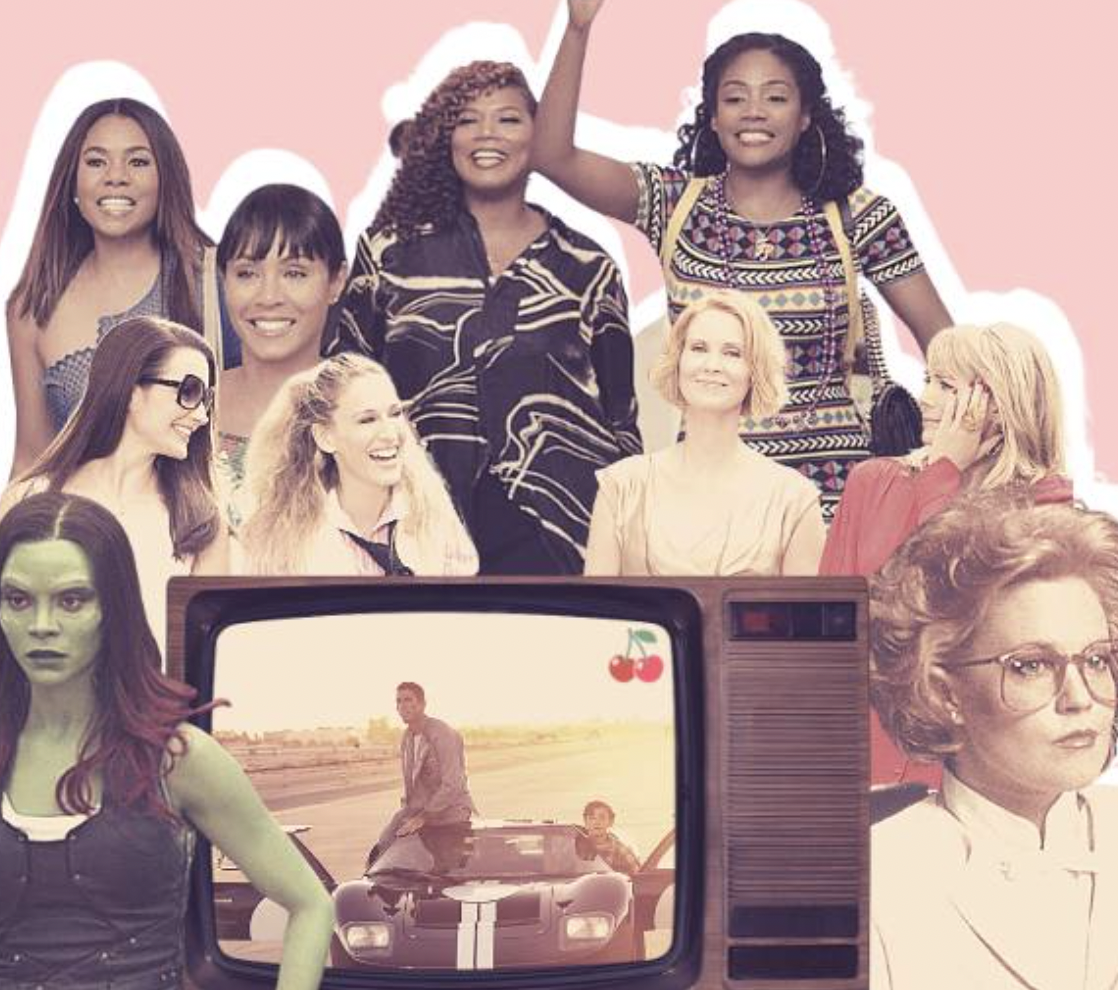Authentically Inclusive Representation (AIR)
In 2020, the Center for Scholars and Storytellers released the report ‘Beyond Checking A Box: A Lack of Authentically Inclusive Representation Has Costs at the Box Office.’ A 2.0 version of the report was released in 2022. The report includes many compelling insights that make the case for inclusion at all levels of production, and also provides recommendations for measuring what ‘authentically inclusive representation’ looks like.

Perhaps now is finally the time that Hollywood movies, which shape hearts and minds throughout the world, will start to reflect ALL of us in ways that resonate deeply with the multicultural audiences that make up the USA.
Here, we highlight recommendations and best practices from this report, and encourage you to read the full report for further insights.

In the 2.0 Report, CSS and their experts also evaluated how tropes and stereotypes factored into the audience’s considerations. The ‘new’ AIR score was based off the 3 following components:
How well the film performed based on the original definition of authentic and inclusive representation (AIR);
The extent to which the film’s story or character development avoided relying on problematic or harmful stereotypes/tropes;
The extent to which the film’s representation of characters’ culture/group increased the complexity of a general audience’s understanding of that culture/group

In 2021, CSS partnered with the leading talent and sports agency Creative Artists Agency (CAA) and the Full Story Initiative to further define and assess the trends in the AIR report.
Their goal was to: Replicate findings with a large objective dataset; Look at trends over time; Determine if AIR storytelling (e.g., independent of who is in front of and behind the camera) is related to box office performance; Expand our lens to examine representation of a greater number of marginalized groups; Leverage the expertise of cultural organizations
Read The ReportSpecific suggestions from the report include:
- Commit a specific percentage of your slate to projects from underrepresented creatives, and leverage data and diversity of perspective to make content investment decisions.
- While building the diversity of your team and your inclusion capabilities, take active steps to identify and collaborate with key third-party community and social issue experts during the development process.
- While distributing greenlight power more equitably among executives, ensure that you are supporting a culture where calculated risks don’t jeopardize job security.
- Conduct production-wide training at the start of filming on the importance of specific themes or communities being represented in the project.


